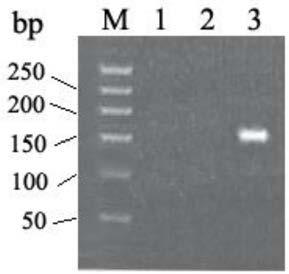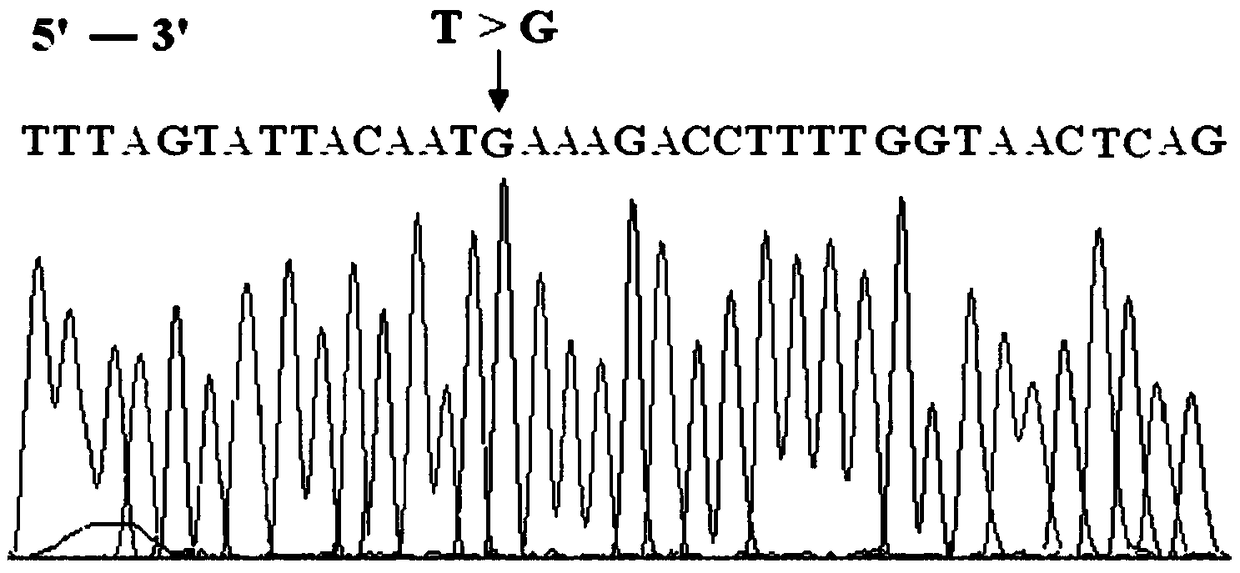BRCA1 gene g. 43063754T)G mutant and application thereof in breast cancer auxiliary diagnosis
An auxiliary diagnosis and mutant technology, applied in the fields of genetic engineering and oncology, can solve the problem of increasing the risk of malignant tumors, and achieve the effects of convenient diagnosis, improved sensitivity and specificity, and convenient detection.
- Summary
- Abstract
- Description
- Claims
- Application Information
AI Technical Summary
Problems solved by technology
Method used
Image
Examples
Embodiment Construction
[0020] The present invention will be further described below in conjunction with the accompanying drawings.
[0021] as attached Figures 1 to 2 For the BRCA1 gene g.43063754T>G mutant, its wild-type BRCA1 gene DNA sequence is shown in SEQ ID NO: 1, its mutant BRCA1 gene DNA sequence is shown in SEQ ID NO: 2, and the mutant BRCA1 gene DNA sequence is shown in SEQ ID NO: 2. Compared with the wild-type BRCA1 gene DNA sequence, the gene DNA sequence has a g.43063754T>G site mutation.
[0022] In this example, PCR amplification and Sanger sequencing were used in 58 Chinese Han female breast cancer patients with a family history of breast cancer. We found that one patient had bases T to G at position 43063754 on chromosome 17 of the BRCA1 genome The mutation of base, the numbering of this gene in NCBl reference database GRCh38.p12 is NC_000017.11 (43044295-43125483). Subsequent verification of breast cancer samples without family history showed that 4 of the 1,850 Chinese Han fem...
PUM
 Login to View More
Login to View More Abstract
Description
Claims
Application Information
 Login to View More
Login to View More - R&D Engineer
- R&D Manager
- IP Professional
- Industry Leading Data Capabilities
- Powerful AI technology
- Patent DNA Extraction
Browse by: Latest US Patents, China's latest patents, Technical Efficacy Thesaurus, Application Domain, Technology Topic, Popular Technical Reports.
© 2024 PatSnap. All rights reserved.Legal|Privacy policy|Modern Slavery Act Transparency Statement|Sitemap|About US| Contact US: help@patsnap.com










